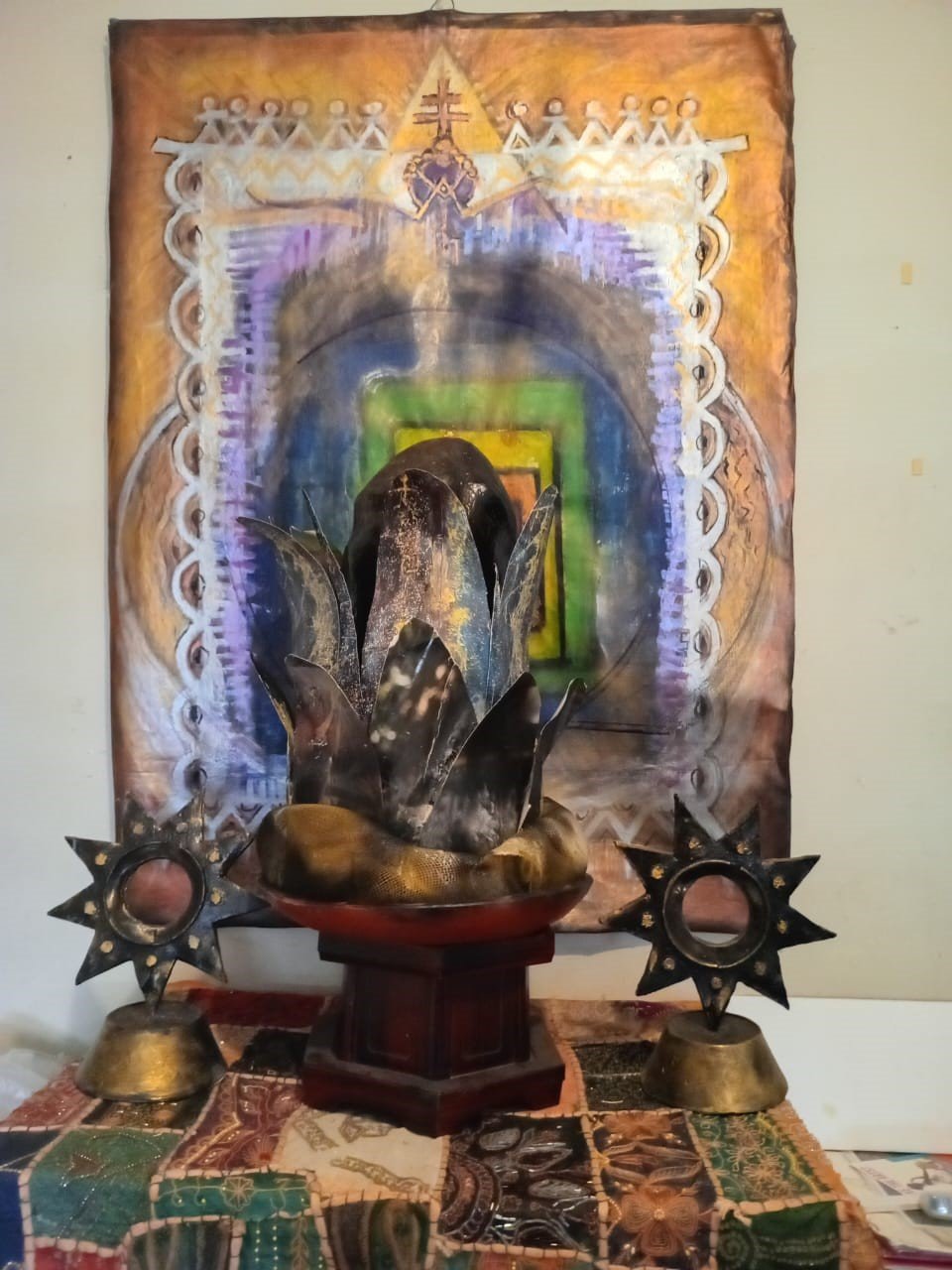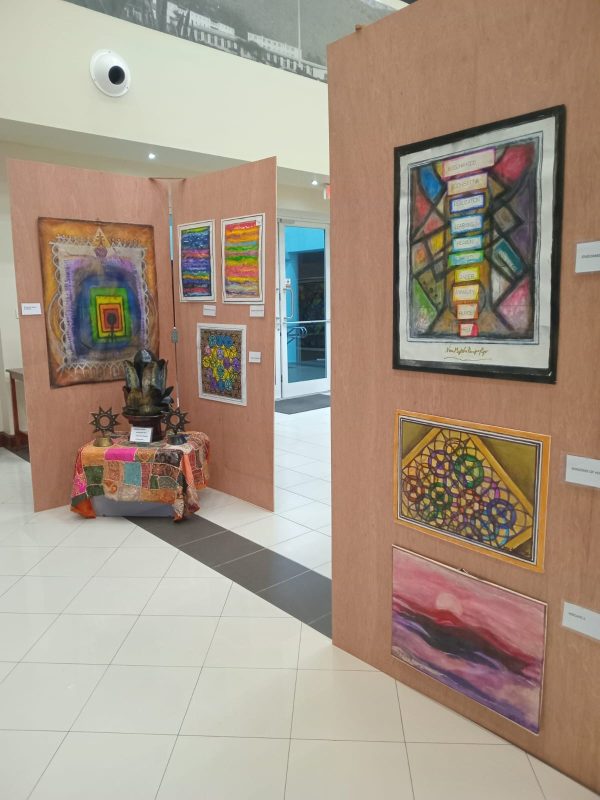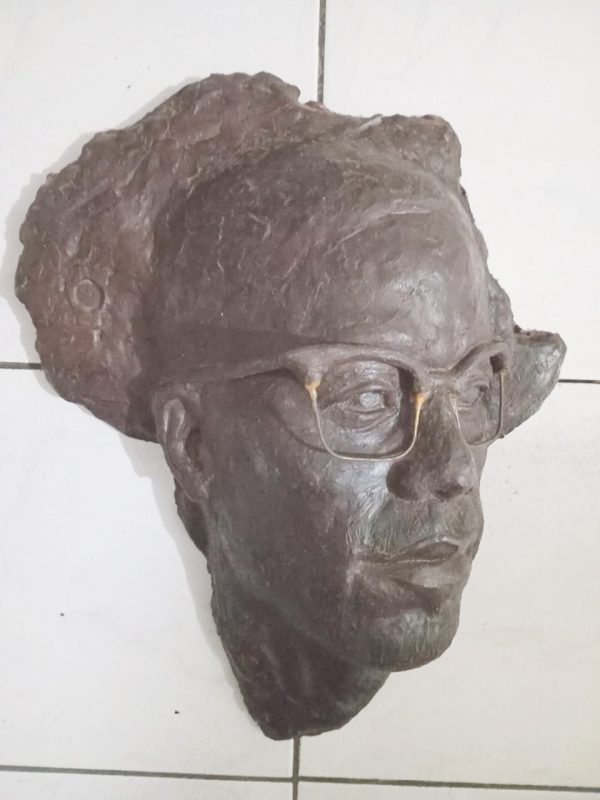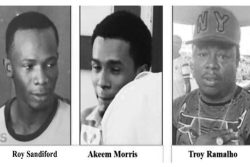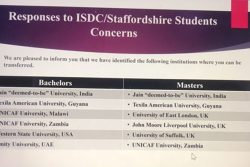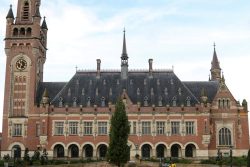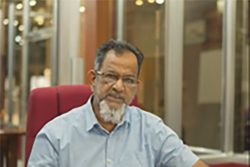 Guyanese-Jamaican artist, Keith Agard, is hosting ‘The Message of an Artist’, which opened November 16, 2024, at the University of the West Indies in Kingston, Jamaica. Agard, who works in both sculpture and painting, is a former administrator and instructor of the ER Burrowes School of Art and is an independent researcher and practicing Buddhist. According to a press release: “The significance of this exhibition serves as a new point of departure for the artist, the beginning of a new cycle with a firm conviction, regarding his strong sense of identity, purpose and direction. The Message of an Artist seeks to clarify a very unique vision as to the role of art in our society.” The following paragraphs by Agard articulate the foundation of the works in this exhibition, which will continue to be available for public viewing until November 30.
Guyanese-Jamaican artist, Keith Agard, is hosting ‘The Message of an Artist’, which opened November 16, 2024, at the University of the West Indies in Kingston, Jamaica. Agard, who works in both sculpture and painting, is a former administrator and instructor of the ER Burrowes School of Art and is an independent researcher and practicing Buddhist. According to a press release: “The significance of this exhibition serves as a new point of departure for the artist, the beginning of a new cycle with a firm conviction, regarding his strong sense of identity, purpose and direction. The Message of an Artist seeks to clarify a very unique vision as to the role of art in our society.” The following paragraphs by Agard articulate the foundation of the works in this exhibition, which will continue to be available for public viewing until November 30.
Visual Arts Education: A system of cultural value-creation pedagogy
I wish to draw attention to the limitless potential in both the practice and the teaching of art. There are [immense] benefits and joyful rewards to be attained through the more playful, creative and imaginative approach to educational content that is based upon aesthetic theory, particularly in relation to profound concepts of spiritual awakening, and the elevation of consciousness.
Visual Arts Education falls within the wider category of Aesthetic Education, which is generally understood as a system, or methodology, for the development of our human aesthetic senses – those upon which human intelligence, judgement, and higher consciousness are based. It should be noted, however, that the aesthetic sensibility reaches way beyond our common reference to the five physical senses that help us to navigate the outer environment of the material world. All human beings are gifted with a full spectrum of nine levels of consciousness, with the potential for our whole development as fully integrated human personalities. The Arts in Education can help to facilitate this integration, whereby we can expand our state of being, and our human life-condition in general, to enable the benefits of our inner spiritual and aesthetic aspects to flourish in harmonious unity, within a safely protected, structured, peaceful and orderly outer environment of natural biodiversity and balance.
In addition, it should also be recognised, however, that art and spirituality are inseparable, and therefore it is unfortunate that very little attention is given to the real significance of the role of the artist, particularly in our Third World developing societies. It must be clearly understood that art, because of its educational potential as mentioned before, nurtures the roots of culture, and when the culture of a people is not allowed to be developed in ways that enable our authentic humanity to flourish, there could be no real sustainable development of the society made up of human beings.
The path begins to open to higher states of consciousness through the higher process of Realisation – a doorway towards seeking the fundamental reality and attaining spiritual Wisdom. Art tends to unravel the unfortunate confusion or entanglement of the normal/traditional learning system(s). A skillful teacher, it helps us resolve the problem of discernment, so we can free ourselves culturally or creatively […]
“Art is the highest task, and the proper metaphysical activity of this life.” said Nietzsche. … and according to Bernard Shaw, “…art is the only teacher, except torture.”
Basically, however, every work of art is an attempt to represent in the proper form-structure the organisation of energy forces, [and for these to be] integrated into a complete unit of […] harmony, balance and interest. [The] aim is always to arrive at an interesting unit. [Thus,] the artist strives to find a total resolution of disparate, diverse, or complementary elements/agents of conflicting value, all of which [should] contribute to the function of unity and wholeness while the integrity of each contributing agency is maintained.
It is for this reason that the artist must […] be committed to the cause of attempting to apply the very principles that call a work of art into being – the organisation of the social and cultural fabric of living beings, so that communities are developed into places, people/collectives and things of beauty within their own context – complete noble works of art in themselves, of the highest value.
Education of the aesthetic senses is a process of value-creation, whereby the measure of growth and development in human consciousness could be clearly determined. What is established by such [is] marked by elevation of the various modes of both perception and sensation – one’s heightened ability to perceive and to feel a great deal more, and with greater intensity than what the ‘lower’ experiences of the state of learning could allow.
[…]
Such a seemingly subjective argument may, nevertheless, be very difficult to rationalise. But first we can consider that the state of higher modes of perception and sensation, triggered by the activation/education of the aesthetic senses provide for an intuitive (higher consciousness) way of knowing, which is certainly a difficult, if not unreasonable, position to accept when viewed and examined from a limited life state lower than that of realisation.
Obviously, the aesthetic sensibility is only made apparent in expression. It remains an invalid option until acted upon by a deliberate, cause-determined, process that is correctly described as creativity. This is the all-important process through which we transform thoughts, ideas, emotions, and all inner insights of perception and sensation into new and original expressive forms. This is the transformative process that gives meaningful expression to the value of our general behaviour as human beings. The process of creativity is always in strict opposition to destruction. It should also be noted that positive behaviour patterns (not of a destructive nature) are sure reflections of the function of the creative/transformational process that is a result of development of the aesthetic senses and growth in human consciousness.
